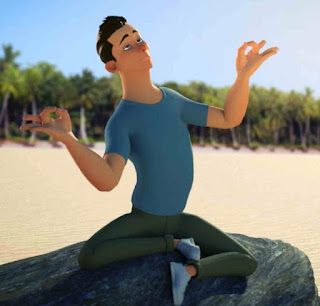This also happens in lipsync; where the character will make a vowel or consonant; then snap back into a default mouth shape much too quickly. Much better to hold the vowel or consonant longer, and really get the most out of the pose.
But in real life, emotions stick. People don’t beam for half a second and then wipe their face clean — a reaction lives in the body, even after the moment passes. That’s why holding a pose longer almost always makes animation feel more natural, more readable, and more entertaining.
For more resources on how to plan animation (including how to use thumbnail sketches and live action), follow these links:
Hold The Pose Longer
 |
| Chatacter pose by Robin Herrmann |
Strong Poses Tell a Story
A strong pose is a storytelling tool. It lets the audience read the character’s thoughts. When you cut it short, you rob them of that connection. Instead of rushing back to default, commit to the emotion. Linger. Let the expression breathe.
Next time you animate, try this: when you think it’s time to move on from a pose, add another 8–10 frames to it. See how much more clarity and personality you get.
Resources on Planning Animation
 |
| Acting Pose by Alex Southcombe |
- Medusa Thumbnails by Milt Kahl
- Why thumbnail sketches need facial expressions
- Thumbnail sketches by Pixar's Victor Navone
- Thumbnailing Mrs Copperbottom from "Robots"
- Thumbnailing "Boog" from "Open Season"
- How to Animate a Dialogue Shot
- How to Plan a Pantomime Shot
- How to Plan a Creature Animation Shot
- How to Use Live Action Reference to Plan Animation
- Body Language for Animators


No comments:
Post a Comment